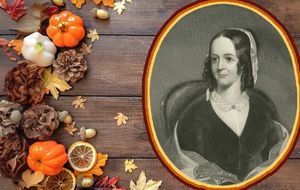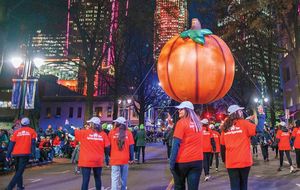Contributed by Matthew Hanks, Hanks Realty Group Team Captain & Realtor
Thanksgiving is one of America’s most cherished holidays, a time when families gather to share a meal, express gratitude, and reflect on the blessings of the past year.
Its origins, however, extend far beyond the modern traditions of turkey and pumpkin pie. Understanding the history of Thanksgiving reveals its deep roots in cultural exchanges, perseverance, and unity.

The First Thanksgiving: A Pilgrim and Native American Feast
The story of Thanksgiving begins in 1621 in Plymouth, Massachusetts, when Pilgrims and members of the Wampanoag tribe came together to celebrate the Pilgrims’ first successful harvest in the New World. After a harsh winter in which many settlers perished, the surviving Pilgrims owed much of their success to the Wampanoag people, who taught them how to cultivate local crops and hunt native wildlife.
This communal feast, which likely featured wildfowl, venison, corn, and squash, was not called “Thanksgiving” by the participants. It was simply a shared meal symbolizing mutual cooperation and gratitude.
Thanksgiving Becomes a Tradition
For more than two centuries, Thanksgiving was observed sporadically in various colonies and states. Days of thanksgiving were often proclaimed to mark significant events, such as the end of droughts, military victories, or successful harvests. These observances were usually religious in nature and varied widely in timing and customs.
Sarah Josepha Hale: The “Mother of Thanksgiving”

Thanksgiving as a national holiday owes much to the persistent efforts of Sarah Josepha Hale, a writer and editor best known for penning the nursery rhyme “Mary Had a Little Lamb.” For over 30 years, Hale lobbied presidents, governors, and other leaders to establish Thanksgiving as a national holiday. She viewed it as a unifying tradition, particularly during the divisive years leading up to the Civil War.
Her advocacy paid off in 1863 when President Abraham Lincoln issued a proclamation declaring the last Thursday of November a national day of Thanksgiving. Lincoln sought to inspire unity and healing during the Civil War, framing the holiday as an opportunity for all Americans to reflect on their blessings.
 Modern Thanksgiving: A Time-Honored Tradition
Modern Thanksgiving: A Time-Honored Tradition
Over the years, Thanksgiving evolved into the holiday we recognize today. By the late 19th century, the meal had become a central feature, with turkey emerging as the traditional centerpiece due to its affordability and size. Other staples like cranberry sauce, mashed potatoes, and pumpkin pie also became popular.
In 1939, President Franklin D. Roosevelt briefly moved Thanksgiving up a week to extend the holiday shopping season, but the decision proved controversial. In 1941, Congress officially established the fourth Thursday of November as Thanksgiving Day.

Beyond the Feast: Thanksgiving Traditions
Modern Thanksgiving is about more than just the meal. Parades, such as Macy’s Thanksgiving Day Parade in New York City, have become iconic parts of the holiday. Football games, volunteer efforts, and expressions of gratitude are also widely observed.
Reflections on Thanksgiving’s Legacy
While Thanksgiving is a time of celebration, it’s also an opportunity to reflect on the history of Native Americans and their significant contributions to the survival of early settlers. For some, the holiday serves as a moment to acknowledge the complexities of this history and honor the resilience of Indigenous communities.
Conclusion
Thanksgiving remains a beloved American tradition, a day to celebrate family, gratitude, and shared history. From its humble beginnings as a harvest meal in Plymouth to its establishment as a national holiday, Thanksgiving continues to evolve while holding steadfast to its core values of unity and thankfulness. As we gather around the table each year, we not only honor the past but also create new traditions for the future.


